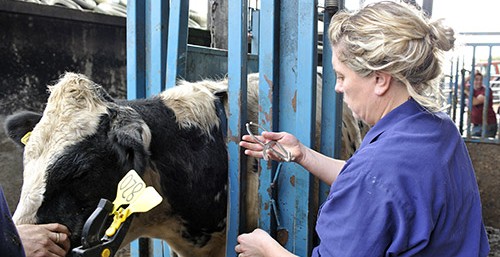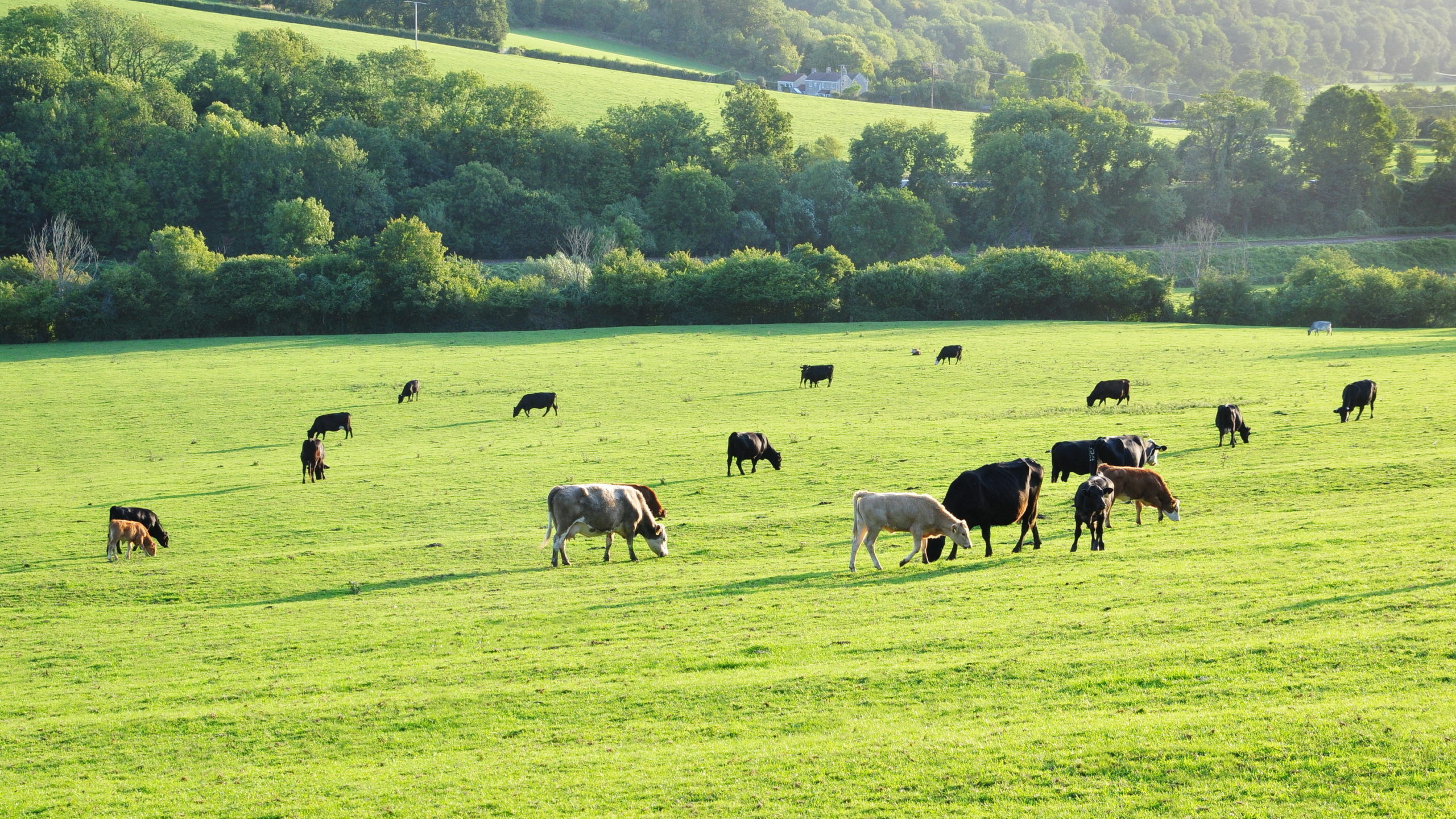Cattle herds in the six-monthly testing parts of the Edge Area that meet certain criteria are eligible for annual surveillance testing (“earned recognition”) since May 2019.
The Edge Area was established in January 2013 as part of the government’s Strategy for achieving officially TB free (OTF) status for England. Despite Defra implementing enhanced TB surveillance and control measures in cattle from 2013, the overall level of bovine TB in the Edge Area has increased. In all Edge Area counties, infection is being introduced into herds as a result of purchase of cattle with undisclosed infection, usually from the High Risk Area (HRA) but also from other parts of the Edge Area. Direct or indirect contact with infected badgers is also believed to play a role in several counties.
In most Edge Area counties there is evidence that infected herds are being discovered sooner after infection is introduced than in the past, indicating some success in control measures. However, it is essential that surveillance and control measures are strengthened to reverse the trend of rising levels of bovine TB and halt the spread of disease.
In January 2018, changes were made to the Edge Area boundaries and counties that were previously split between Edge and HRA were incorporated fully into the Edge Area. Changes were also made to routine surveillance testing in some Edge Area counties.
In March 2024, APHA introduced changes to their earned recognition processes:
- the regular review of the eligibility lists (identifying herds becoming eligible and herds losing their earned recognition) switched from six-monthly to quarterly.
- keepers newly qualifying for earned recognition were given the opportunity to delay their next scheduled tests as long as the test window of the next routine herd test had not started.
Annual surveillance testing for lower risk herds in the six-monthly testing parts of the Edge Area

All cattle herds in the high bovine TB incidence counties of Cheshire, Oxfordshire, and Warwickshire and in parts of Berkshire, Hampshire and Derbyshire are subject to routine six-monthly surveillance testing.
Since May 2019, cattle herds in these parts of the Edge Area are eligible for annual surveillance testing if they meet either of the following criteria:
- the herd has been in existence for at least six years and has not had a TB breakdown in that six year period. A single break from keeping cattle of less than four months during the six year period is permitted.
- the herd is registered to a bovine TB health scheme accredited under the Cattle Health Certification Standards (CHECS) at level 1 or above.
Q&A
Defra’s public consultation on the introduction of routine six-monthly surveillance testing in the High Risk Area (HRA) included a proposal that less frequent surveillance testing of cattle herds should be allowed, depending on their TB histories and herd health accreditation for bovine TB. This policy change recognises and rewards cattle keepers with a reduced risk of suffering a TB breakdown and/or who are proactively trying to increase their herd’s resilience to TB by becoming CHECS TB accredited. It also helps to incentivise other keepers to reduce the bovine TB threat to their herds.
Less frequent routine surveillance testing for lower risk cattle herds has applied in the Edge Area since May 2019.
Research by APHA in 2015 on the risk of a herd becoming infected with bovine TB showed that after a TB breakdown, the longer a herd went without a further breakdown, the likelihood of the herd becoming infected with bovine TB dropped. The bovine TB health schemes licensed by CHECS use the number of years officially TB free (OTF) as a basis for their scoring system, and also require enhanced biosecurity standards to be met. The eligibility criteria for annual surveillance testing takes into account both the number of years OTF and CHECS accreditation for bovine TB to identify herds at lower risk of suffering a TB breakdown.
If a cattle business has not held any cattle for multiple and/or prolonged periods of time throughout the six year qualifying period (and hence at times there were no animals at risk of contracting bovine TB), then this artificially lowers the herd’s risk of suffering a TB breakdown. However, to allow flexibility to cater for alterations to business models and unexpected events, a single break of less than four months throughout the six year qualifying period is permitted. Additionally, breaks of up to one month are permitted when assessing eligibility to account for all-in all-out systems.
Cattle Health Certification Standards (CHECS) is the regulatory body for cattle health schemes in the UK and Ireland. CHECS was established by the cattle industry to control and eradicate a number of diseases using a set of standards to which all licensed cattle health schemes must adhere. The cattle health schemes are voluntary and are administered by a number of providers covering the following diseases;
- Bovine TB
- Bovine Viral Diarrhoea (BVD)
- Infectious Bovine Rhinotracheitis (IBR)
- Johne’s Disease
- Leptospirosis
- Neospora
The CHECS bovine TB herd accreditation programme was launched in late 2016. For more information and to register, visit the CHECS website.
Participating herds are allocated a score from 1-10, denoting the number of years of official TB freedom. For example a herd that has been OTF for 10 years will have a score of 10 and a herd that has been OTF for one year will have a score of 1. If a herd is CHECS accredited for bovine TB and loses its OTF status due to a TB breakdown, then the herd is no longer able to participate in the scheme. Once the herd regains its OTF status, it can re-join the scheme and gradually build its CHECS score up from zero again. If a CHECS accredited herd loses its OTF status solely due to an animal in quarantine, its CHECS score and eligibility for annual surveillance testing should not be affected. For more information, see the bovine TB herd accreditation technical standard on the CHECS website. Herds registered to a bovine TB health scheme must adhere to certain standards (as laid out in the technical specification) which include implementing enhanced biosecurity measures on-farm and completing additional TB testing e.g. post movement testing for added animals.
APHA identifies all cattle herds that meet the eligibility criteria for annual surveillance testing. APHA write to cattle keepers whose herds meet the eligibility criteria or have lost the eligibility to let them know their herd testing interval. APHA check eligibility every three months.
APHA works with the providers of CHECS-licensed bovine TB health schemes to identify keepers of herds eligible for earned recognition. Keepers of CHECS TB accredited herds can also contact APHA and provide proof of their membership so that the herd testing interval is reviewed accordingly.
APHA checks eligibility every three months and the testing interval for cattle herds that meet the eligibility criteria is amended from six-monthly to annual. By default, the next test scheduled will be delayed by six months as long as the cattle keeper and the Veterinary Delivery Partner (VDP) have not already been notified in writing of the requirement to test. In those cases where the cattle keeper and the VDP have already been notified but the test window has not started yet, the cattle keeper can request APHA to delay their next test window for six-months. If the scheduled test window has already started, the test will need to be completed and the subsequent test will be scheduled on an annual basis.
Yes. Keepers of herds eligible for annual surveillance testing are notified by APHA in writing. If a keeper wishes for their herd to remain on six-monthly surveillance testing then they must notify APHA of their preference and their herd’s testing interval will remain unchanged. Cattle keepers opting out of annual testing will not be able to opt back in for at least 12 months (if they are still eligible). Any TB testing already scheduled at the time of opting in will still need to be completed where the test window has already been communicated to the Veterinary Delivery Partner and cattle keeper. The subsequent TB test will be delayed by six months. In those cases where the test window has not started, cattle keepers can request APHA to delay the next test window for six months.
Yes. Herds suffering a TB breakdown will automatically undergo a six month herd check test after regaining OTF status, in line with standard APHA procedures. If the herd completes the six month check test with negative results, a six-monthly routine herd test will be scheduled as the herd will no longer meet the eligibility criteria for annual surveillance testing.
Yes. Contiguous testing is carried out in herds on annual surveillance testing immediately adjacent to a TB breakdown herd with lesion and/or culture positive animals.
A TB incident involving co-located farmed non-bovine species during the six year qualifying period does not prevent a herd qualifying for annual surveillance testing as long as the cattle herd remained OTF.
APHA updates the eligibility lists every three months around March, June, September and December each year using data as of the end of the previous January, April, July and October respectively. The updates result in some herds becoming eligible (when they reach six years OTF or achieve level 1 or above CHECS accreditation), but also some herds losing eligibility due to having a TB breakdown or prolonged/multiple breaks from keeping cattle.
No. Herd testing intervals are not amended between the three-monthly eligibility checks for those herds qualifying under the six years OTF criterion.
Yes. For herds qualifying under the CHECS criterion only (at level 1 or above), cattle keepers can contact APHA any time during the year as soon as their herd becomes eligible, and their herd testing interval will be amended from six-monthly to annual. The next test scheduled will be delayed by six months as long as the test window has not started. If the test has already started, it will need to be completed and then the subsequent test will be scheduled on an annual basis. This would occur in the following scenarios:
- the herd is registered to a CHECS-licensed bovine TB health scheme following a TB breakdown and then achieves one year OTF.
- the herd has already had at least one year OTF and recently registered with a CHECS-licensed bovine TB health scheme.
No. EFUs are APHA-approved TB units and as such they retain their unique status and operating conditions and undergo surveillance testing at the normal frequency for the area in which they are located.

Useful resources
- Bovine TB epidemiology reports for the Edge Area
- Information about expansion of the Edge Area and changes to surveillance TB testing
- Bovine TB health schemes licensed by the Cattle Health Certification Standards (CHECS)
- The Government's strategy for achieving officially bovine TB free status for England